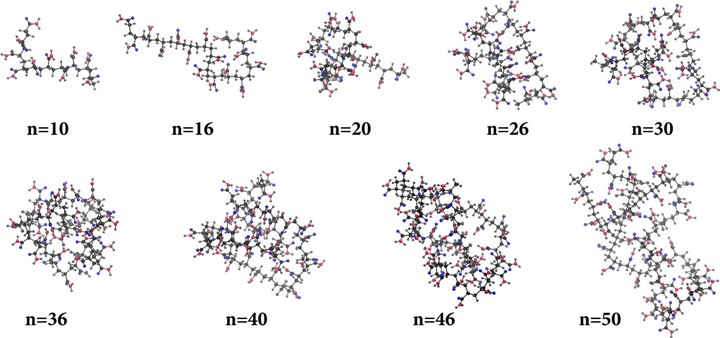Polyacrylamide in glycerol solutions from an atomistic perspective of the energetics, structure, and dynamics

Abstract
All-atom molecular dynamics is used to investigate the structural, energetic, and dynamical properties of polyacrylamide (PAM) oligomers of different lengths solvated in pure glycerol, a 90:10 glycerol–water mixture, and pure water. We predict that the oligomers’ globular structure is obtained only when the modeling strategy considers the solvent as a continuous background. Meanwhile, for all-atom modeled solvents, the glycerol solutions display a strong tendency of trapping the oligomers in instantaneous elongated random coiled structures that remain locked-in over tens of nanoseconds. In pure water, the oligomers acquire considerably shorter random coiled structures of increased flexibility. The all-atom force field, generalized amber force field, is modified by including restrained electrostatic potential atomic charges for both glycerol and PAM. Three PAM oligomer lengths containing 10, 20, and 30 monomers are considered in detail by monitoring the radius of gyration, end-to-end distance, intra-potential energy, and solvent–oligomer interaction energies for decades of nanoseconds. The density and radial distribution function of glycerol solutions are calculated when modeled with the modified atomic charges, showing a very good agreement with the experimental results at temperatures around 300 K. Glycerol has multiple applications, including its use in gel formation for PAM gel electrophoresis. Our findings are relevant for the design of sensors based on microfluidics and tailored pharmaceutical buffer solutions.